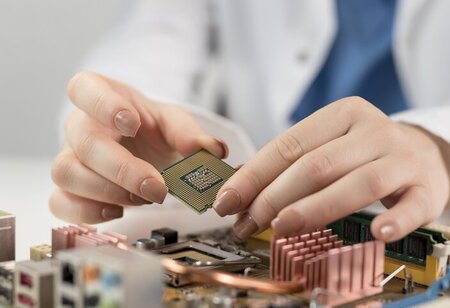
Nikon intends to revitalize its dormant chip making equipment business by selling a new product in China that employs technology that is no longer subject to export limits. The Japanese manufacturer will sell a stepper that uses i-line technology, which was first commercialized in the early 1990s, next summer. Nikon will launch its first new i-line system in 25 years.
Because it is difficult to obtain cutting-edge manufacturing equipment in other countries, Chinese chip makers are shifting production lines to create lower-tech items such as power semiconductors.
However, there is still a risk of violating trade limitations put on the world's second-largest economy. In July, Japan joined the United States in imposing export restrictions on semiconductor equipment intended for China.
Nikon is taking all necessary efforts to ensure that it remains in compliance with export restrictions. Nikon, on the other hand, cannot afford to ignore a market as vast as China.
Nikon expects consolidated net profit to fall 22% to 35 billion yen ($233 million) in the current fiscal year, which ends in March. Despite the success of its high-end mirrorless camera business, chipmaking gadgets have been a financial drain.
Nikon's stock has fallen by 2% in the last year, compared to a 15% growth in the Nikkei Stock Average.
The precision equipment division, which oversees chipmaking devices, is forecast to earn 12 billion yen in operational profit this fiscal year. This would be a 51% decrease from the previous year, the second straight year of decline.
Sales of lithography equipment, which is at the heart of semiconductor manufacture, have reached a plateau. Existing clients have also reduced lithography equipment utilization rates, resulting in lower earnings from maintenance and inspections.
Circuit patterns are etched on a substrate using lithography equipment. The more detailed the patterns, the shorter the wavelength of the exposure source.
According to Mitsubishi UFJ Morgan Stanley Securities, the Dutch leader ASML commanded a decisive 62% global share of lithography equipment sales volume last year. Canon came in second place with 31%, while Nikon came in third with 7%.
Nikon and Canon dominated the lithography equipment market until the 1990s, when they were surpassed by ASML in the race to produce cutting-edge extreme ultraviolet (EUV) lithography.
In the late 2010s, EUV technology was commercialized, and ASML is now the sole manufacturer of those chips making machines. Each EUV unit is worth well over $100 million, and ASML decreases research and manufacturing costs by outsourcing components, resulting in huge profit margins.
Canon has concentrated its efforts on long-wavelength lithography equipment. Despite the fact that the devices are less expensive than EUV equipment, the company is able to increase sales volume and generate profits.
Nikon's arsenal, on the other hand, has a wide range of light sources with few notable specialties. In the 1990s, it sold advanced lithography equipment to Intel, but the Japanese company lagged in developing new clients.
In terms of return on equity (ROE), a key indicator of profitability, ASML achieved ROE close to 60% last year, whereas Nikon posted 7.4% in fiscal 2022. Canon had a slightly better year-end profit margin of 8.1%.

